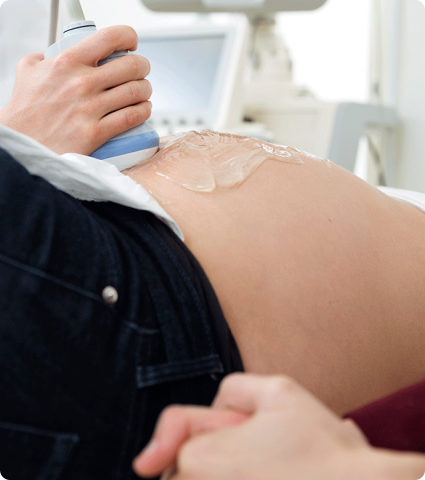Chorionic Villus Sampling (CVS)
Chorionic Villus Sampling (CVS)
Chorionic Villus Sampling (CVS) involves taking a biopsy of the finger like projections of the baby's placenta for DNA analysis. CVS will diagnose chromosomal abnormalities, genetic diseases, metabolic disorders, haemophilia and infection. The tissue sample is collected using a syringe which is introduced through the mother's abdominal wall or via the cervix, under ultrasound. CVS is primarily performed after 10 weeks.
CVS will provide parents with information about chromosomal abnormalities in the same way as mid trimester amniocentesis with the exception of the detection of spina bifida.
CVS will diagnose a baby with the following conditions:
- Chromosomal abnormality – Down Syndrome, Trisomy 18
- Genetic diseases such as – Cystic Fibrosis, Duchenne Muscular Dystrophy, Huntingdons Chorea, Sickle Cell Disease
- Metabolic disorders
- Haemophilia
- Infection
CVS can be undertaken at any stage of pregnancy, but it is used primarily as a first trimester test after 10 weeks.
Benefits of CVS
- The results of the test are usually available within a few days.
- CVS provides information at an earlier gestational age than amniocentesis, allowing for earlier decision making about the future of the pregnancy.
- CVS provides a sample large enough to take advantage of molecular genetics technology such as DNA analysis, if the family’s history is an indicator.
Possible risks of CVS
- Miscarriage - When CVS was compared with second trimester amniocentesis, it was found that miscarriage following CVS was greater, though the loss rate depended upon the competence of the operator and the gestation at which the sampling was carried out. It was less if the procedure was carried out after 10 weeks’ gestation. The risk of miscarriage is 2%, although research suggests that rates of loss are reducing substantially (Evans and Andriole 2008).
- Results wrong or unclear - CVS has a higher risk of results failure and ambiguous results than amniocentesis.
- Limb abnormality - studies have indicated a link between CVS and limb abnormality, probably restricted to tests carried out before 10 weeks' gestation (RCOG 2005)
- Bleeding - Comparisons between CVS and amniocentesis have also found that women suffer more bleeding after the test. Rhesus-negative women will be offered anti-D immunoglobulin to prevent possible isoimmunisation.
References
- Evans, M., Andriole, S. (2008) Chorionic villus sampling and amniocentesis in 2008, Current Opinion in Obstetrics and Gynecology 20(2): 164-168.
- Royal College of Obstetricians and Gynaecologists (RCOG) (2005). Amniocentesis and chorionic villus sampling, Guildeline No.8, London, RCOG.

